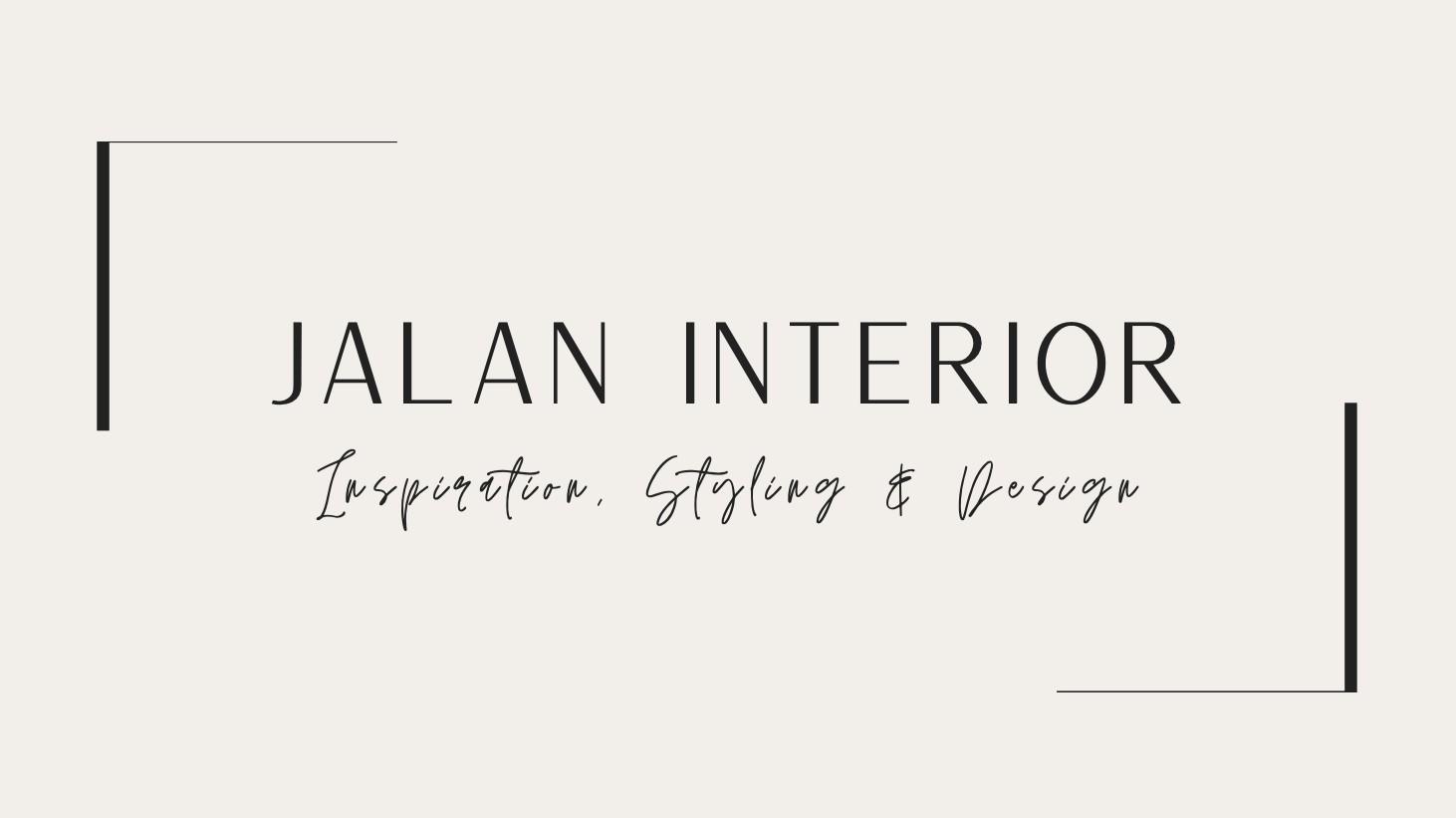
3. Art Nouveau 1890-1914 12. Art Deco 1920-1940 21. Modernism 1920 - 1950 24. Mid-Century Modern 1945-1975 30. Post-Modernism 1970 - 1990 37. Minimalism 1950 – present day 46. Bibliography
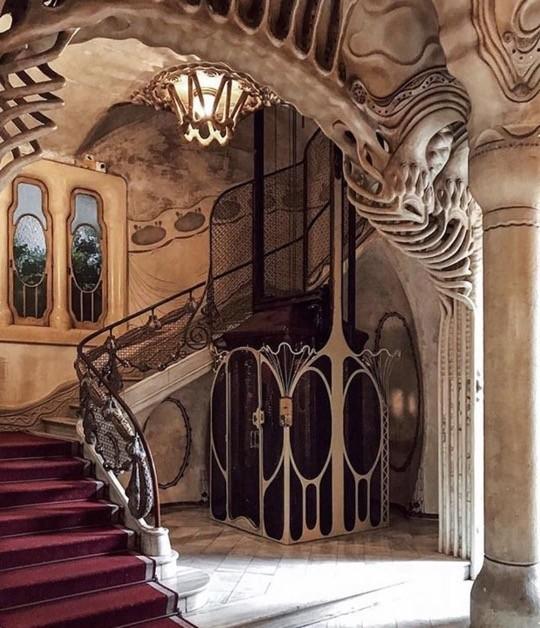


3. Art Nouveau 1890-1914 12. Art Deco 1920-1940 21. Modernism 1920 - 1950 24. Mid-Century Modern 1945-1975 30. Post-Modernism 1970 - 1990 37. Minimalism 1950 – present day 46. Bibliography

The last design movement of the 19th century, Art Nouveau forced new boundaries within art, architecture and interiors, concentrating on nature and the organic origins of form. Originally emerging in Belgium known as “New Art”, this period was in many ways a continuation of the Arts and Crafts movement that preceded it, yet was a dismissal of the traditional elements of design. Art Nouveau reacted against historicism, preferring to explore a new imagistic language by applying art to everyday life and objects. Named after ‘La Maison de l’Art Nouveau’, an art gallery in Paris owned by avant-garde art collector Siegfried Bing, Art Nouveau showcased a new style that was heavily influenced by European artists of the time (Louis Comfort Tiffany who supplied the stained glass to Bing’s gallery, Gustav Klimt, Georges de Feure, Henri de Toulouse-Lautrec). There were two distinct styles within Art Nouveau, Curvilinear (seen in France, Belgium, Italy and Spain) and Rectilinear (seen in artists within Germany, Austria and Britain). A form of modern art, it sought to diminish the dominance of conventional forms in design throughout the 19th century, and instead bring abstract individuality and energetic growth that was accessible to everyone.
Casa Batllo

A unique masterpiece redesigned by Antoni Gaudi, this building was made from modern materials such as stone, glass, ceramic and cast iron, an ornamental piece of design (right). The façade is decorated with shimmering coloured glass and ceramic, and along with the ‘fish scale' tiled roof generating an impression of nature, the sea and earth combining. The bright colours are dazzling and fantastical, bestowing originality and exuberance to the design. Truly a new ‘aesthetic’ of its time.
• Siegfried Bing
• Antoni Gaudi
• Charles Rennie Mackintosh
• Louis Majorelle
• Louis Comfort Tiffany
• Georges de Feure
• Victor Horta
• Henry Vande Helde
• Henri de Toulouse-Lautrec
• Gustav Klimt
• Hector Guimard
• Josef Hoffman
• Michael Thonet
• Peter Behrens
• Otto Wagner
• Émile Gallé
• Jospeh Maria Olbrich
• Jacob and Josepf Kohn
• Gustav Stickly
• Daum Freres
• Louis Majorelle
• Otto Prutscher
• Maurice Dufrene
• WMF Group
• Jules Cheret
The free-flowing and interlacing line was an innovative practise of artistic expression during this movement, and in particular curvilinear style focused on the sinuous and asymmetrical. Stylised plant forms and females’ silhouettes were less controlled, far more harmonious and bulbous and produced a recurrent design that was organic and eclectic. Antoni Gaudi went beyond the notion of an organised structure with his architectural design Casa Batlloin Barcelona (1906). This building was transformed into an intense, spherical and vivid construction that displayed the naturalistic elements of Art Nouveau in an extravagant and psychedelic manner. Interiors included neutrally painted walls, stencilled with wild themed motifs such as florals (roses, waterlily’s, violets, seaweed), animals (butterflies, dragonflies, peacocks) and the female form, demonstrating free flowing and elegant design. Streamlined fitted furniture that was made with natural materials (cherry wood, walnut, sandalwood, mahogany and light oak) organised within the frame of an interior space. No structure or surface was straight, with details such as twisting ironwork reminiscent of tree branches and wavy ocean curls covering walls, ceilings and furniture.

One of the leading architects within the Art Nouveau movement, Horta designed The Hotel Tassel, or The Tassel House (far right) as it is also known. The iconic sweeping staircase is visible from the exterior through the large central windows. The thin twisted iron banister and railings flow seamlessly with the mosaic tiled floor, with the stencilled curves sitting stem-like along the wall. The green iron pillars seemingly grow and expand against the ceiling, evoking imagery of nature and it’s unstoppable progression.
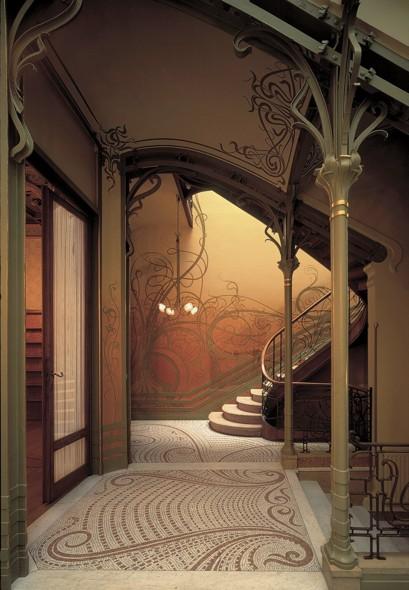


When the Metro first opened in Paris in 1899, locals acquired a fresh and innovative take on Modern Architecture (top right). Designed by Hector Guimard, the surrealist entrance to Port Dauphine station showcases the most elegant and remarkable characteristics to Art Nouveau. The opaque panelling and curved, detailed floral motifs, teamed with muted green cast iron creates a powerful symbolism towards naturalistic plant life. The dragonfly style fan shaped glass roof is a striking and magnificent display of Art Nouveau architecture.

Casa Mila (bottom right) designed by Antoni Gaudi between 1906-1912, demonstrates the ornamental and organic origins of Art Nouveau architecture. Known as "La Pedrera" which translates to The Quarry House (due to the large stone slabs along the facade) this building is as refined as it is remarkable.

Far more structured and straighter than curvilinear style, rectilinear is characterised by a more controlled form with geometric and vertical lines. This form of Art Nouveau originated from Glaswegian artists and was present in British architecture, art and interiors, with designers such as Charles Rennie Mackintosh, who specialised in the geometric line.
Influenced by Belgian artists Henry Van de Helde and Victor Horta, Mackintosh produced sinuous and delicate structures that were abstract and modernist. Due to the trade connections between Glasgow and Asia, Japanese influences were inspired within his work, and these graceful and rhythmic inspirations became especially popular with western artists. The simplicity of Japanese art, the use of texture, light and shadow as well as the flatness of colour was all evident within Mackintosh’s designs. Rectilinear style was fixated on the practicality and quality of interiors, with a space feeling intimate and lighter in tone yet coordinated. The artistic quality of furniture concentrated on craft and ornamental form, a fusion between design and art.
Constructed between 1904-1906, and designed by Vienna architect Otto Wagner, the decoration within this building is streamlined and minimal, with a contemporary black and white colour palette. The use of symmetrical lines is original and creative as well as the rectangle and square shapes that are repeatedly present throughout the interior (top right).

Mackintosh partnered with his wife, Margaret Mackintosh, to craft this Hill House (right) in Helensburgh, Scotland. The stark, brightly painted room is customary of Mackintosh's work, and the highly ornate details such as the lighting, rose motifs and oriental inspired tapestry and stencilling and stained glass is exquisite. There is sound use of evenly spaced geometric lines, and the naturally lit, spacious layout is purposeful and modernist. The iconic ladderback chairs are one of Mackintosh’s most widely known designs, and they sit boldly against the wooden tables.

Furniture – Fitted furniture and a matching decorative scheme. Curvilinear furniture involved curves and flowing lines. Natural woods (Cherrywood, walnut, mahogany).
Rectilinear furniture involved rigid, modernist vertical lines.
Floors – Polished floorboards, and carpets to match the scheme.
Lighting – Curvy glass lamps and hanging pendants. Table lamps by Tiffany (see opposite).
Walls – Wood panelled with asymmetrical forms. Plain painted walls with stencilled art, often flowing plant-like lines. Wallpaper with naturalistic themes (florals, animals). Decorative plasterwork onto ceilings.
Doors – Carved and panelled to match overall scheme. Ornate brass details in the shape of organic forms (e.g. Tendrils).
Windows – Casement with leaded panes. Coloured glass with Art Nouveau patterns.
Fabrics – Printed cottons (suitable for curtains), cretonnes (suitable for upholstery), stamped velvets, stencilled linens.
Émile Gallé
French artist Émile Gallé created glass, ceramics and furniture pieces that were all inventive and imaginative, and the foundations of the Art Nouveau movement. The sideboards (top right) featured door panels at a lower height, gilded-iron and carved wood, and detailed naturalistic patterns and elements in keeping with the Art Nouveau style.

Tiffany (related to the New York Jewellers Tiffany & co.) studied the decorative arts in Paris and was immensely inspired. Upon his return to the US, he formed a décor company and became well known for his glass items such as bowls, vases and in particular the Tiffany Lamp (right). The dazzling, lively colours with naturalist images, such as dragonfly's, were exquisite and luxurious.

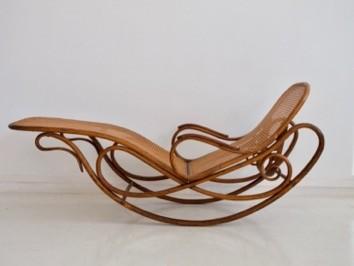
Gebrüder Thonet was originally established in Vienna by Michael Thonet. In later years he handed the company over to his two sons. Gebrüder Thonet were best known for their bentwood furniture, including the No. 14 Chair and their Thonet rocking chairs. The light weight rocking chair was originally designed by Michael Thonet, with its graceful curves and Art Nouveau style organic lines, reminiscent of plant roots that have grown from the earth and ground the chair sits on.
The curvilinear fireplace is a hallmark of the Art Nouveau French style, with its sinuous and peacock blue fireplace. The floral wallpaper and panelling, as well as the muted green pillars that seemingly grow from the floor to the ceiling like uncontainable tree branches.

Glassware, Silverware, Metalwork and Ceramics are a few of the central decorative accessories that were prevalent during the Art Nouveau period. The introduction innovative technology and machinery meant that silver and metals revealed a new form of expression. Glass pioneers such as Emile Galle employed naturalistic and organic elements within their work. The Symbolist movement played a role, as an manifestation of literature and painting exhibited through the ornate glassware. Japanese art motivated artists within Art Nouveau, commonly seen in ceramics with elegant lines, blossom detailing and playful colours.

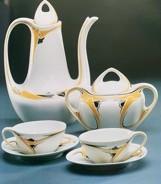
 Louis Vuitton's Paris Home
Maurice Dufrene porcelain, 1900
Otto Prutscher glass goblets, 1907
WMF Group metal vases, 1900
Thonet Rocking Chair
Louis Vuitton's Paris Home
Maurice Dufrene porcelain, 1900
Otto Prutscher glass goblets, 1907
WMF Group metal vases, 1900
Thonet Rocking Chair
Advances in print technology meant there was an emergence of poster art during the Art nouveau period. It became a fresh form of expression and artists around the world embraced the vibrant, sensual and lively imagery. Jules Cheret known as the ‘Father of the Poster’ established radiant colours and experimented with lines, perspective and lettering to produce some of the most glorious examples of Art Nouveau graphic art. There were a few themes that consistently emerged in these posters: the female form, cropped images with borders, text across the images, linear and angular qualities and bold, flat colours. The posters and street art of the Art Nouveau era reflected many of them themes and forms of the sensuous, vibrant and elegant furniture, interiors and architecture.
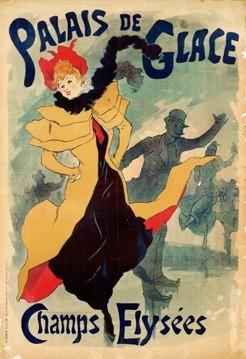







After the end of the Industrial Revolution, designers, architects and artists were progressively looking forward into the 20th century for ‘something new’. With modern life increasingly more technologically and mechanically focused, the Art Deco movement (also called Style Moderne) launched with the first decorative arts exhibition since WW1: Exposition Internationale des Arts Décoratifs et Industriels Modernes - 1925 (International Exhibition of Modern Decorative and Industrial Arts). This exhibition took place beside the Palais de Chaillot in Paris and was a celebration of modern style, focusing on innovation rather than the traditional and nostalgic. Key artists and designers began to emerge such as Emile-Jacques Ruhlman who founded ‘Ruhlmann et Laurent’ with Pierre Laurent and specialized in interior design. Luxury goods, furniture, wallpaper and lighting were created that epitomised the design movement. Timeless yet glamorous and elegant and in keeping with French Art Deco characteristics. This Style Moderne also inspired the introduction of the chic and sensual styles of the avantgarde art world (Cubism, Constructivism, Bauhaus, De Stijl and Futurism). Graphic arts also began in Paris, with poster’s and fashion catalogues showcasing the Art Deco inspired works such as that seen at Paul Poiret’s couture house.

Designed by three architects (Jacques Carlu, Louis-Hippolyte Boileau and Léon Azéma), the central location for the Exposition Internationale des Arts Décoratifs et Industriels Modernes (right) the building sits boldly over the challiot hillside, featuring strong, curved lines and grand sculptures that are reminiscent of Style Moderne and the beginning of the Art Deco movement.
• Emile-Jacques Ruhlman
• Jules Leleu
• Le Corbusier
• Marcel Breuer
• Ludwig Mies van der Rohe
• Robert MalletStevens
• Jean-Michel Frank
• Eileen Gray
• Alvar Aalto
• Connell Ward Lucas
• Elsie de Wolfe
• Sybil Colefax
• Syrie Maugham
• Wells Coates
• Lee Laurie
Bold glamour, luxurious elegance and organised shapes define the characteristics of the Art Deco period. The repetitive use of geometric angles and stylised motifs (triangular, zigzagged and chevron) along with sleek surfaces and finishes such as stainless steel, Bakelite and light-coloured wood. Interiors were distinctive with clean lines and mass-produced products that consisted of a ‘streamlined look’. Furniture included seating that was low and comfortable, coffee tables arrived in the home as well as the decadent and refined cocktail bar. Style Moderne was outrageous and opulent with rich colours (purple, silver, lime greens, blues, reds, oranges and gold) mirrored glass and innovative design. Lighting was cutting edge in design and material, electric lights in moulded glass and chrome, featuring soft curves and sleek ornamentation. Hand crafted luxury focused on machine age mass production that has sophistication and grace, symbolising fashion forward luxury and wealth.

Designed by Wallis, Gilbert & Partners as the headquarters for The Hoover Company this building demonstrates the most beautiful elements of Art Deco architecture: decorative towers either side of the building, with bright and bold Aztec inspired motifs (top right). In the lobby the bold terrazzo flooring and deep green geometric skirting that adorns the lift is daring and epitomises the glamour of the Art Deco period (bottom right).


An ornately designed staircase, with brass details and linear patterns that illustrates the magnitude and grandeur of the building (far right).


The Century bar at Gleneagles hotel features simple curtains that hang from the ceiling to the floor, pendant lighting with skyscraper globes and comfortable seating with neutral tones – all key characteristics of Art Deco interiors (right).


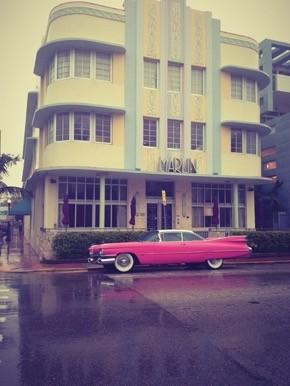
Art Deco arrived in American design in the 1930s, primarily due to the fact that no American designer, architect or artist could exhibit at the Exposition Internationale des Arts Décoratifs et Industriels Modernes in Paris. The US Secretary of Commerce at the time, Hebert Hoover, claimed there was no modern art in America, however plenty US designers attended the exhibition in Paris and the Art Deco movement eventually made it's way to the west. Hollywood in particular embraced the sophisticated and elegant style, with it then slowly becoming popular around the rest of the country. America took the lead with Art Deco inspired architecture, and in particular with their tall buildings and skyscrapers (such as the Chrysler building in New York, with it’s stylised sunrays pattern). Art Deco architecture became mainstream in the US when the Roosevelts Works Progress Administration (WPA) created structures such as libraires, schools and other public buildings. It was an expression of democracy through design, as jobs in the public sector were created, jumpstarting the economy post war.
Art Deco Lounge Suite

Comfy yet sophisticated in style, seating during the Art Deco period became lower in height and more inviting. They did not however, comprise with their flair and grace and suited the new style of Art Deco interiors that were far more comfortable with close-carpeted floors, and simple, plain curtains.
 Art Deco architecture in Miami, USA
Art Deco architecture in Miami, USA
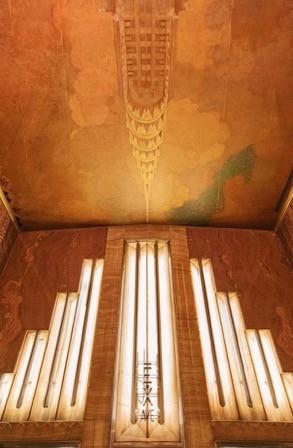
One of his most famed works is the iconic Chrysler building in New York, built in 1928 and featuring some of the most fundamental origins of American Art Deco design. Art Deco and architecture blend effortlessly within this structure. The stainless steel materials, sunrise imagery and spiked top is eye catching, whilst the interiors feature a grand lobby, staircase and multiple elevators. The use of wood marquetry, marble and chrome is modern and adventurous and Van Alen made sure to use ornamented details visually similar to car headlights and radiators caps in acknowledgement to the products produced by the buildings occupants.
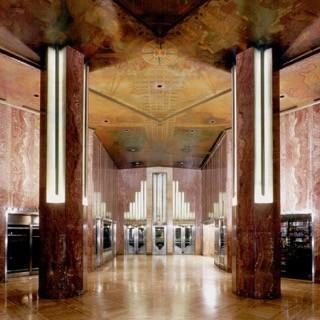
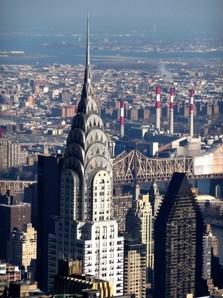
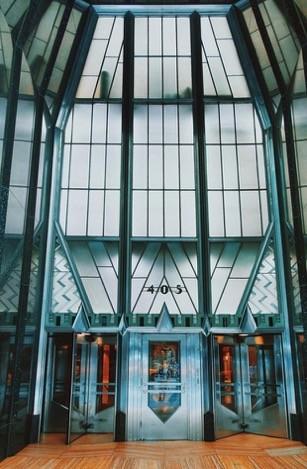
Furniture – Fitted furniture. Low comfortable seating. Coffee tables and cocktail cabinets appeared.
Floors – Polished parquet wood and closed carpeting. Wilton carpets with geometric and Greek inspired patterns.
Lighting – Innovative with glass bowls, pendant and table lighting. Uplighters and indirect lighting hidden in coving.
Veneered in rosewood with bronze detailing and geometric friezes. Jules Leleu crafted furniture that was sleek and refined with opulent materials, characteristic of the Art Deco period.

Walls – Mouldings, cornices and dado rails are gone. Plain, pale walls. Mirrored glass.
Doors – Flush doors, veneer of maple, walnut, limed oak or plywood.
Windows – Casement or picture windows with metal frames. Simple curtain treatments, ceiling to floor, plain fabrics. Heading concealed in box pelmets.
Fabrics – Satin, wool. Linen, cretonne, stamped velvet, moquette. Chintzes on black backgrounds.
An English architect of the Art Deco era, that memorably designed this unique plastic radio in 1933. One of the first truly ‘modern’ designs in Britain, this piece exemplifies Art Deco with its colourful character, partially abstract style and typical Deco form.
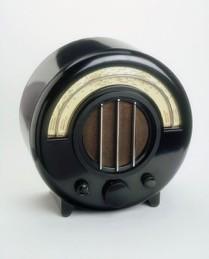
The glamour and allure of the Art Deco period is revealed within the style of cocktail shakers and glasses. The avant-garde colourful glass with abstract motifs representative of that time period are stunning, sleek and stylish.


Exploring glossy and luxurious materials
Eileen Gray’s work became innovative and symbolic of the Art Deco period. In particular her lacquer screens with their structured panelling and clean lines.
American Art Deco was far more pared-down, sober and less ornamental than the French and European style, with clear geometric shapes spread out evenly and aerodynamic streamline features. Materials were less lavish in comparison, for example gold was replaced with chrome and granite was used instead of concrete. Angular and linear patterns as well as highly stylised and simplified motifs such as flowers, animals or human figures. The city of Miami in Florida embraced Art Deco within the beach front architecture, featuring Art Deco characteristics of clean lines, various curves and shapes, a palette of pastel colours interspersed with white rucco, and the motifs of sea shells, palm trees and sunsets. They are timeless and beautifully symbolic of the opulence, modernity and elegance of the Art Deco period.
Emile – Jacque RuhlmannOne of the most celebrated Art Deco furniture designers, this piece showcases key characteristics of the era. The rich materials and fine craftsmanship, ivory inlay with black and white marquetry that travels along the legs of the stand.

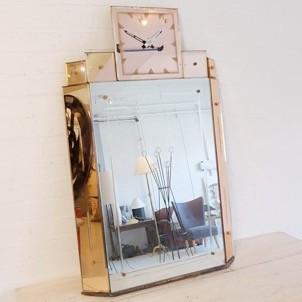
Opulent finishes such as mirrored glass became a staple within Art Deco accessories. The oblong shape and peach tint to the edge of the mirrored glass is eye-catching and exquisite. The chic clock steals central focus and this piece would have sat very well above a classy cocktail bar.
A very popular item during the ‘roaring twenties’, the figure lamp showcases a beautiful Art Deco lady figurine in bronze effect holding a frosted glass globe as a light shade. The piece is stylized and simplified, reminiscent of Art Deco works such as Atlas, the bronze statue by Lee Lawrie at Rockefeller Centre in New York, USA.
 Art Deco Mirror Clock
Art Deco Mirror Clock


Modernism stems from the beginning of the 20th century and an innovative belief that art and design could progress and inspire lives within civilization. During a time period with ever-changing and advancing technology, materials and philosophies, modernism was seen as a principled and idealistic mentality emerging within art, architecture and design. A denunciation of traditional ethics and morals, instead embracing new, imaginative and ingenious notions. Arising in European design, particularly in architecture, which demonstrated a freedom in purity of form and material, whilst interior décor was minimal and sleek with an emphasis on ‘the look’ as well as ‘the function’.
One of modernism’s vital figures as well as one of the founders of the Dutch De Stijl art movement, Mondrian was an artist that took inspirations from Cubism and developed this into a more simplistic form of conceptual art. Mondrian coined the movement ‘neo-plastisicm’ which focused on unpretentious and abstract art, the use of mainly three primary colours (red, blue, yellow) with a grid like use of vertical and horizontal lines. Mondrian was of the belief that within a post war world, art could boost an assortment of fresh ideas that would advance humanity and day to day life.

 Piet Mondrian
Piet Mondrian


A revolutionary school of art, founded by German architect Walter Gropius, that radically altered the concept of modern art and the manner in which society was exposed to design. Democratic art and a vision for the future, Bauhaus denoted a feeling and sentiment following the war. A new start and idealistic idea, with many of the artists eventually migrating to America and influencing the design industry in the US. Gropius linked the existing art schools (School of Applied Art and Academy of Fine Arts) creating a community and equality between fine art, craft, decorative art and architecture within the design industry. Many notable artists and designers surfaced during this period including Paul Klee, Josef Albers and Wassily Kandinsky.
The Gropius house (below right) embodies the flair of this movement with basic qualities of mid-century modern structures, such as a flat roof and an open plan interior. Supplies managed were a mixture of traditional (wood, brick) and newly discovered technologies (welded steel, chrome and glass blocks). There was an efficiency to the architectural design, for example all the bathrooms were placed in the northwest corner of the building, thus ensuring the same plumbing was utilised.
Optimistic, bold colours, abstract art and simplistic lines were fundamental attributes of the Bauhaus design movement, and along with the Dutch art movement De Stijl, have become widely known to epitomise minimalism and purity of design materials. An idealistic vision by Gropius that still dominates and influences the design industry today as 2019 marks the centennial of the Bauhaus school.


Although the expression Mid-Century Modern was not devised until 1984 (by author Cara Greenberg) the movement emerged after the end of the second world war. There was a rise in demand for property and housing as soldiers arrived back home in the US, resulting in the expansion of cities and a large growth in the suburbs. Out of this expansion in home ownership came the arrival of Mid-Century Modern, a fresh and simplistic style characterized by the notion of functionality and the needs of the average family. For the first time, America had a generation of young people with a disposable income, not required to enter the national service and instead could focus on the pleasurable, relaxed manner of domestic life. This was reflected in the architecture and interiors that were born out of this era, with a booming post war economy, design was attainable yet exquisitely created.
• Alexander Girard
• Albert Frey
• Herman Miller
• Paul Klee
• Wassily Kandinsky
• Laszlo Moholy-Nagy
• Josef Albers
• Walter Gropius
• A. Quincy Jones
• Marcel Breuer
• Edward Wormley
• George Nelson
• Eero Saarinen
Frey was one of the most crucial architects during this era of a new modern style, specifically designing flat roof panes, sleek lines and minimal ornamentation in the home. With the expansion of cities and American suburbs after the war, Palm Springs saw the desert population more than double, and Frey was one of the key architects in this city. His work was called “desert modernism” and his particular style of low level, easy and bright architecture became infamous within Palm Springs. City Hall (top right) is a skilful example of his modern architecture, with a large flat canopy featuring graphic writing leading into the entrance and palm trees growing through the centre, symbolic of the connection with the outdoors in mid-century modern design. Frey used innovative materials and colour palettes, corrugated metal and muted turquoise colouring which communicate the carefree, joyful design ethos of the time period.


• Verner Panton
• Harry Bertoia
• Jens Risom
• Hans Wegner
• Arne Jacobsen
• Kaare Klint
• Harvey Probber
• Poul Henningsen
• Jozef Chierowski
• Cara Greenberg
• Florence Knoll
• Ludwig Mies van der Rohe
• Frank Lloyd Wright
• Isamu Noguchi
“It’s a wonderful life’ director, Frank Capra’s House designed by A. Quincy Jones.
Mid Century Modern was illustrated by three simple features: Clean lines, multipurpose design and an integration with the outdoors. One of the main elements of architecture during this design period was low level structures, only one or two stories, flat roofs and sleek angular lines. Architects such as Marcel Breuer, Walter Gropius and Ludwig Mies van der Rohe used new technologies and materials to design beautifully formed and practical buildings. There was an orderly, minimalist aesthetic to the exterior and interior, a straightforward simplicity that embraced new resources, such as plexiglass, metals, vinyl and plywood. Designers welcomed these materials and cleverly combined them with traditional forms to initiate a juxtaposition of sleek style combined with organic shapes. One of the great architectural changes involved the removal of thick supporting walls and the introduction of slender posts, glass walls and exposed beams. Windows were plentiful and sliding glass doors allowed a connection to nature, combined with the uncluttered, open plan interiors there was a feeling of bringing the outside indoors. Furnishings were comfortable and there was a lack of formality and convention to the overall expression.

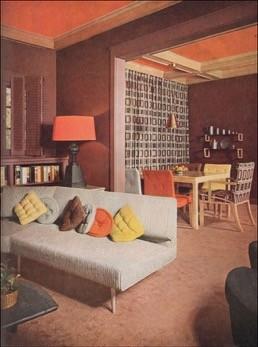

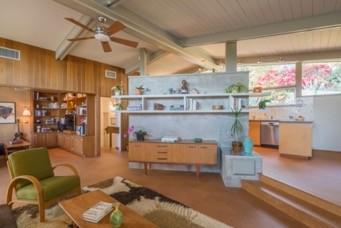

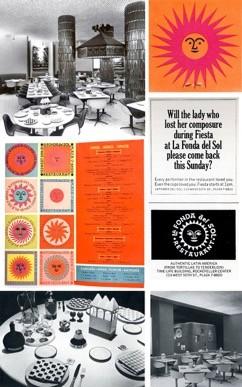
Iconic mid-century modern pieces that characterize the design movement, especially items such as their Wire chairs, the Lounge Chair and Ottoman (top right) that are still reproduced into the 21st century. They used up to date materials, such as wire and plastic resin, to make organically formed, comfy and ingeniously designed pieces. Functional yet visually stunning, a piece of art within your own home.
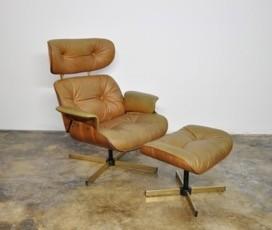
An American industrial designer, Nelson fashioned mid-century modern furnishings such as the Platform Bench (far right), which is still profoundly included within interiors today. His designs where fixated on rectilinear lines and an architectural organization that was inspired by his design background. Nelson’s furniture was mass-produced, made to last and affordable for everyone, suiting the mid-century modern attitude that good design should be available for everyone.
Girard’s work was energetic, cheerful and demonstrative of the mid-century modern movement. His daring graphic prints and lively colour palette matched perfectly with the charm and ease of design at the time. Girard had connections with artist such as Andy Warhol, Henry Miller and Charles & Ray Eames, and between 1952 – 1973 he was the director of the fabric division at Herman Miller’ design firm. He was inspired by Latin- American folk art and produced printed wallpaper and furniture with pops of colour and naturalistic and geometric shapes. The memorable Time and Life Building in New York is a brilliant model of his modern design and attention to detail, as he crafted majority of the details within, from the furnishings to the ashtrays, match boxes and menu covers (below right).
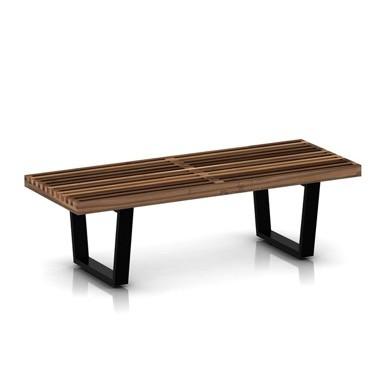 Charles
George Nelson
Alexander Girard
Charles
George Nelson
Alexander Girard
Furniture – Simple design, clean lines and functionality. Iconic pieces like the Eames lounge chair. Bright colours, mixed with natural woods. Use of plastic, vinyl, plexiglass and glass.
Floors – Open floor plans. Wooden or stone floors with patterned rugs.

Lighting – Ornamental pendants such as the sputnik and starburst lights. Simple table and floor lamps, play with scale and proportion.
Walls – Minimal ornamentation. Painted in bright colours. Exposed brick walls and beams.
Doors – Use of wide glass and timber. Extension of exterior and architectural design. Standout feature. Sliding glass doors.
Windows – Lots of large windows to let in natural light. Ceiling to floor.
Fabrics – Simple fabrics, minimal ornamentation or fuss. Bright colours, bold patterns. Upholstered seating. Minimal window treatments to help more light enter.
A new generation focused on the enjoyable relaxation of a domestic lifestyle. Home accessories such as exubernat glassware, bar carts and ashtrays appeared on the scene (right). This bar cart designed by Arthur Umanoff, made with modern materials, slates of wood and a sleek metal frame.


Compact and simple design in the shape of the 366 Easy Chair, by Joseph Chierowski in 1962
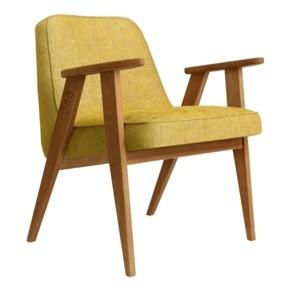
A cultural combination of the emergence of Pop Art and the futurist space age personified in a typical mid-century modern clock design.

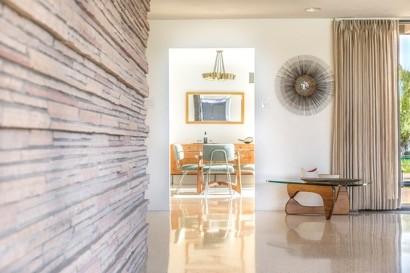




Defined as an opposition to views and ideals within the modernist movement, Post Modernism welcomed the distinctive, whimsical and eclectic. With an increasingly unsure and sceptical western world, the design movement embodied a cultural move in which exclusive modernism no longer represented the majority. Turmoil and instability after two world wars and an exposure to the sufferings within other countries brought about a new freedom of expression and an art movement that supported a blend of styles. There was a return to the morals, philosophies and traditions of a by-gone era, pre-dating the 20th century. The most crucial of all was a collapse in the division between high and low culture, in which post modernists took revelation from mass media and consumerism culture, rejecting the idea of grander art and design.
• Robert Venturi
• Denise Scott Brown
• Alessandro Medini
• Ettore Sottsass
• James Stirling
• Judith Grinberg
• Jasper Jones

No 1 Poultry (right) is an iconic post-modern structure. Glasgow born Stirling designed an angular and curved building set against stripes and vertical lines. There is veiled unconventionality within the central colourful courtyard, inserting character and individuality to the otherwise stoic business district in central London. Clean lines, sleek style and bright colours all a focus within design and art during this time period.
• Robert Rauschenberg
• John Cage
• Clement Greenberg
• Barbaro Kruger
• Jeff Koons
• Ron Arad
• Philipe Starck
• Michael and Patty Hopkins
• Vivienne Westwood
• Camille Walala
• Michael Graves
The birth of eclectic style, Post-Modernism was nostalgic, exuberant and distinguishing. In effect there were no rules, and art, design and architecture could explore with a range of colour, scale and materials. Traditional art was envisioned and concocted through altered and distorted classical motifs. Colour was lively and vivacious, applying no conventional structures or restrictions. Art and design merged together to make one bold statement - a design, building or home treated as your playground in which you could equivocally explore whichever style you wish. Maximalist in essence as there is no limitation to the ornamentation in your home, furniture pieces that are designed to visually enjoy and not solely as functional items, and the introduction of recycled materials to truly add experimentation and fun within your space.
Designed one of the most iconic post-modernist furniture pieces –the Proust Chair (above right). Inspired by the French writer marcel Proust, Italian designer Alessandro Mendlini created this revolutionary and unconventional chair. Adorned with brightly coloured dots, the 18th century Neo- Baroque style chair rebels against predictable shapes and scale - a statement of unique idealism.

Two iconic post-modern pieces, the Plaza Dressing table and stool and the 9093 Kettle (right), both designed by Michael Graves. A central focus on quality and excellence, yet able to mass produce and be accessible to everyone, an attitude representative of the post-modernist movement in design.
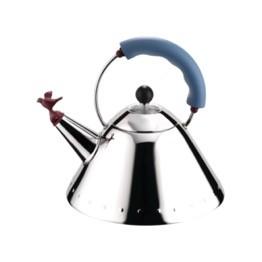

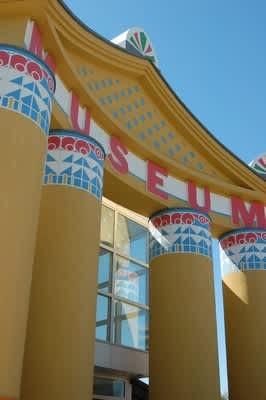

One of the first Post-modern architects, Robert Venturi designed an array of ground-breaking and unconventional buildings. Including, the Vanna Venturi House in 1964 (right), which identified the distinguishing qualities of post-modernist design. The seemingly traditionally features that are distorted in an innovative and novel manner, such as the mis-matched windows, the oversized chimney and arch framed entrance. A reinterpretation of a conventional suburban home, The Vanna Venturi House, designed for his mother to live in, is modern yet playful. Another example of Venturi’s exceptional architecture is the Children’s museum of Houston from 1992 (below right), a courageous and daring structure, with a bright yellow colour palette and zany patterns that enhance the front entrance. Venturi is deemed to be one of the most creative post-modernist architects, challenging principles and standards of design through his work.
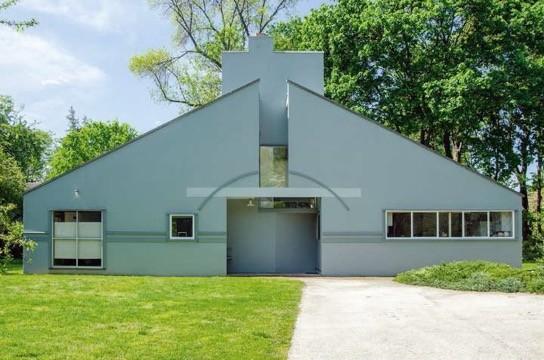
Furniture – Reimagined versions of traditional pieces, including old fashioned motifs. Range of materials used including newly developed acrylics. Column detailing. Free use of colour. Decorative items instead of practical. Recycled materials.

Floors – Bold carpets and rugs, with stripes, free-flowing lines or curved patterns.
Lighting – Playing with scale and developments in technology. One-of-a kind, unusual sculpture-like pieces.

Walls – Bright printed wall paper. Soft neutral painted walls that do not steal focus from the bold furniture pieces.
Doors – Arched entryways.
Windows – Mis-matched window shapes and sizes. Textured glass.
Fabrics – Printed and patterned fabrics in a range of materials.
Sottsass designed the Esprit store (right) and showroom in a signature Memphis style, seen here with the joyful and bold changing rooms. A signature piece designed by Sottsass was the ‘Tahiti’ table light (above right right).
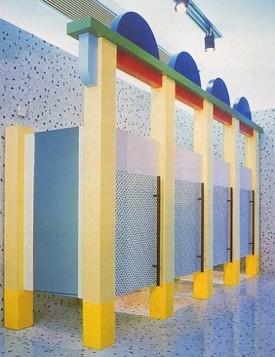

Founded in 1981 Milan, Italy by Ettore Sottsass, The Memphis Group integrated designers and artists that produced unique and ground-breaking fabric, furniture and ceramics. A style characterised by bold, brash patterns and clashing colour palettes, Memphis seemingly responded to customary design and trends preferring to generate any type of reaction, good or bad. Pushing boundaries within stylised architecture and decor, Memphis was showy and outrageous, an amalgamation of influences (Pop Art, Art Deco, Kitsch). The Memphis Group separated in 1987, nonetheless their impact stood the test of time, and this influence can still be found in design today through the blend of materials and groupings of various styles.
An old bank in Ohio, USA (below right) converted into a modern art gallery and yoga studio, decorated by print artist Camille Walala. Dazzling colours and bold geometric shapes are characteristic of Memphis Style. Walala also designed the “Walala In Da House’ exhibition (above right) in which quintessential Memphis patterns and features were presented.

New York based interior designer Sasha Bikoff designed this installation ‘Kips Bay Show House’(far right) inspired by Memphis style. Vivid colours and zany patterns juxtapose the traditional, old fashioned architectural features of the townhouse.
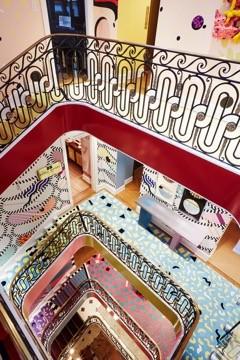

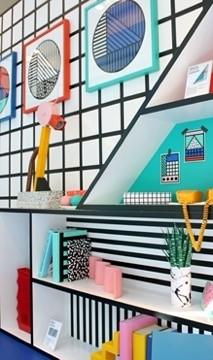


Minimalism emerged during the modernist movement, with a reaction against overindulgence and the exclusivity of the art and design world, instead focusing on the notion of ‘less is more’. Architect Miles van der Rohe was one of the initial innovators of this design aesthetic with refined skyscrapers, the use of ‘new’ high quality materials (concrete, glass, steel) and an attention to the simplicity of form. During the 1960s in New York, artists such as Robert Morris, Frank Stella and Sol Lewitt crafted work with prominence on sleek lines and modest geometric shapes. However, there was a new generation of designers during the 1990s in which minimalism was at the forefront. After the complexity of post-modernism and overconsumption becoming a way of life in western countries, minimalism sought to strip away the excess and instead concentrated on the austerity and purity of design. With the norm of fast paced lifestyles and the cost of living and unemployment increasing, minimalism symbolises an awareness and authenticity communicated through the home’s we choose to live in.
• Ludwig Miles van der Rohe
• James Pawson
• Toshiko Mori
• Tadao Ando
• Philip Johnson
• Buckminster Fuller
• Luis Barragan
• Dieter Raws
• Marcel Breuer
• Donald Judd
• Robert Morris
• Frank Stella
• Sol Lewitt
• Shiro Kuramata
• Peter Zumthor
• Naoto Fukasawa
A prominent architect with the minimalism movement, Chipperfield has designed buildings such a the River and Rowing Museum in Henley-on-Thames (right), and San Michele Cemetery (title page) in Venice that exhibit clean lines, a restrained palette and an unassuming structure.


• Japser Morrison
• Maarten van Severen
• Mats Theselius
• Claudio Silverstrin
• David Chipperfield
• Peter Zumthor
• Richard Rabel
Another essential figure in the development of minimalist design, Pawson has produced many purposeful spaces including this celebrated Calvin Klein store in 1993 (top right). The Madison Avenue, New York building was revolutionary at this time, with an open plan layout, fashion hung sparsely around the store. The space almost felt like a gallery, with the clothing as works of art, large glass windows letting in an abundance of natural light and streamlined furniture such as the clothing rails and boxed seating. Pawson used neutral colours and raw materials such as the light coloured wood, to produce an impression of grace and pureness.

An imperative architect in minimalist design, The Church of the Light in Ibaraki, Japan (right) is an iconic building within this design movement. Ando applies one visible material (concrete) to play with shade and light generating a mesmerizing and sophisticated ambience. With no windows there is a simple glow of light that gleams into the concrete building through the narrow vertical and horizontal gaps, reminiscent of a religious cross, that arouses an emotional reaction. There is purity and elegance within his design.

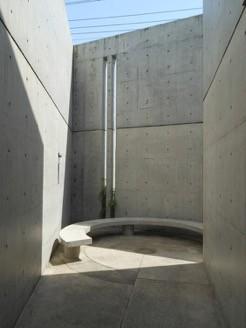 John Pawson
Tadao
John Pawson
Tadao
There are a few significant foundations to minimalist design: high-quality craftsmanship and materials, plainness in ornamentation, an importance on light and shade as well as a connection with nature. A return to basics, relaxed design that is still cutting edge. Large windows that welcome lots of light into uncluttered open plan spaces. The use of materials such as marble, concrete and raw light-coloured woods (pine, plywood) feel unassuming and restrained. There is transparency with a decline in excess and unnecessary objects in the home, instead you find a clean slate to build from, an austere palette of purposeful furniture and multi-functional design. Craftmanship was of high quality yet accessible with inexpensive materials. An ethos to live simply and focus on the consequence and intention of our space, and how this in turn alters the manner in which we live our life.
Maarten van SeverenBelgium designer Severen produced this LC95A Lounge chair (above right) that possess all the central characteristics of minimalist style, including the blend of well-being and architectural figure. The low seat is luxurious and comfortable yet contains sleek, clean lines and delicate construction. A ‘stand alone’ piece and work of art in your own home, accessible nonetheless still exclusive.

Architect Donald Judd’s office loft (below right) with his signature simple angular style, furniture pieces in natural materials such as raw plywood.

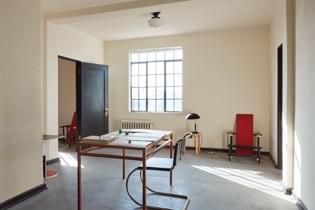

The rise of minimalism in the 1990s was in part inspired by Japanese art, designers and architects, including Shiro Kuramata. Originally studying as an architect, Kuramata eventually took his love of design to the construction of furniture and applied architectural form to the methodical design of furniture. Employing materials such as glass, acrylic and metal mesh there was a sense of transparency and reflection within his work. Encouraged by the manipulation of light in any given space, Kuramata produced renowned pieces such as The Glass Chair 1976 and the How High the Moon Chair 1986 (right).



Furniture – Multi purpose pieces, sparsely laid out in open plan rooms. Angular/ sleek lines, modern materials (acrylic, glass, metal).

Floors – Wall to wall beige carpets, light coloured natural wood flooring. Area rugs.
Lighting – Sculpture styles, minimal lights needed as a focus on natural light.

Walls – Plain painted in neutral light colours. Minimal pattern or colour used. Cladding and brick that bring the outside indoors. Large, simple fireplaces. Doors – Japanese inspired sliding doors, sometimes with glass panes.
Windows – Large window panes, glass walls to let in natural light.
Fabrics – Eco-friendly materials. Natural linen and cottons.
Minimalism has confidence in the effortlessness and least amount of ornamentation, consequently decorative accessories are spare, timeless and every item in a home is carefully considered. Swedish furniture designer, Mats Theselius has designed many minimalistic pieces, including the Club Chair 1994, El Ray 1999 and Embassy Chair 1999 (above right). Superb quality and craftsmanship within his work, using materials such as marble, solid walnut and concrete. Richard Rabel has designed basic and purist accessories such as marble vases and decorative plates (below right). They add a quality and serenity that is vital within minimalistic design. The Taksim side table by Konstantin Grcic (top right) is fashioned from soothing marble and is enduring and architectural in design.

Within the realm of the modernist movement and minimalism, Scandinavian style was formed within Nordic countries (Denmark, Norway, Sweden and Finland) that had experienced a far calmer and more settled political and economic climate during the 20th century. A humanist and composed approach to design was produced with clean lines, simplistic ornamentation and open plan living. These Nordic countries experience long dark winters and fleeting, bright summers which are embodied within their design and architecture. Large windows and glass walls that allow plenty of natural light into a home, uncluttered free-flowing layouts that possess a neutral and clean palette.
There is a compelling connection with the outdoors and nature, and these origins are brought inside through the rustic materials employed (wood, timber) generating a relationship between the indoors and outside. Furnishings are functional and multipurpose and despite the minimal design, Scandinavian style is rooted within the ease and cosiness of the home. An emphasis on wood burning fireplaces and an abundance of textiles that bring warmth, relaxation and comfort. Home accessories are scaled back in these simple and understated homes with a preference for ecofriendly details, symbolic of these politically liberal countries. Well-made craftsmanship is essential with durable, practical pieces that stand the test of time, creating a serene and focused space. Scandinavian style is elegant yet accessible, a dedicated and sustainable style.


Many Nordic designers emerged from the 1950s into the 21st century, inspiring countless artists around the world. Alvar Aalto crafted some legendary pieces, such as the Savoy Vase and Paimio 41 Chair. Ground breaking and distinct design that is still purchased and utilised within interiors around the world today. Verner Panton superbly used modern materials to form sophisticated and simplistic furniture items such as the Pantone chair with mouldable plastic forming a fluid and angular shape that is striking yet comfortable in essence. Scandinavian style is focused on good design being available to everyone, with happiness and well-being being the focal point for that space.
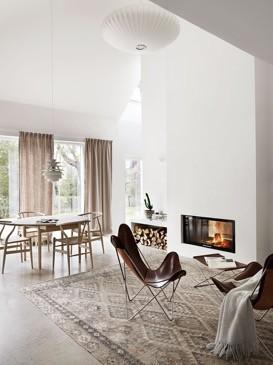

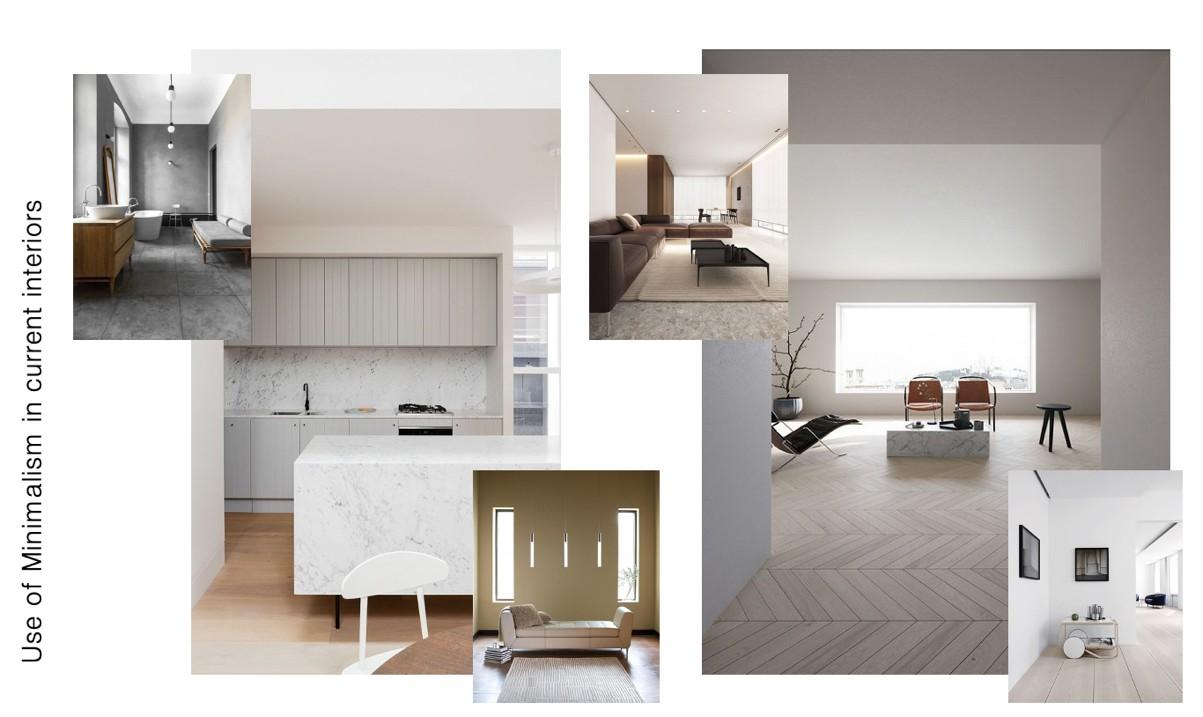
Websites
scandinaviancollectors.com architecturaldigest.in dezeen.com midcenturymodernfreak.tumblr.com modernlivingla.com higginscladding.co.uk mendetc.com midcenturyhomestyle.com trespasalon.com luke.com.au 366concept.com www.pinterest.co.uk, designcollectors.com retroartglass.com thedesignfiles.net architectureartdesigns.com designthefurniture.com 1stdibs.com architecture.com pinterest.co.uk designboom.com vogue.com davidchipperfield.com curbed.com midmod-design.com twentytwentyone.com finnishdesignshop.com
House and Garden
The Telegraph
Architectural Digest
Elle Decoration Living Etc. Wallpaper Country Living Elle Decoration Country Books
Blomquist, H. (2016) InTheMoodForColour Fu, A. (2014) AndreFu Maynes, T. (2015) TheMaker
The British Museum